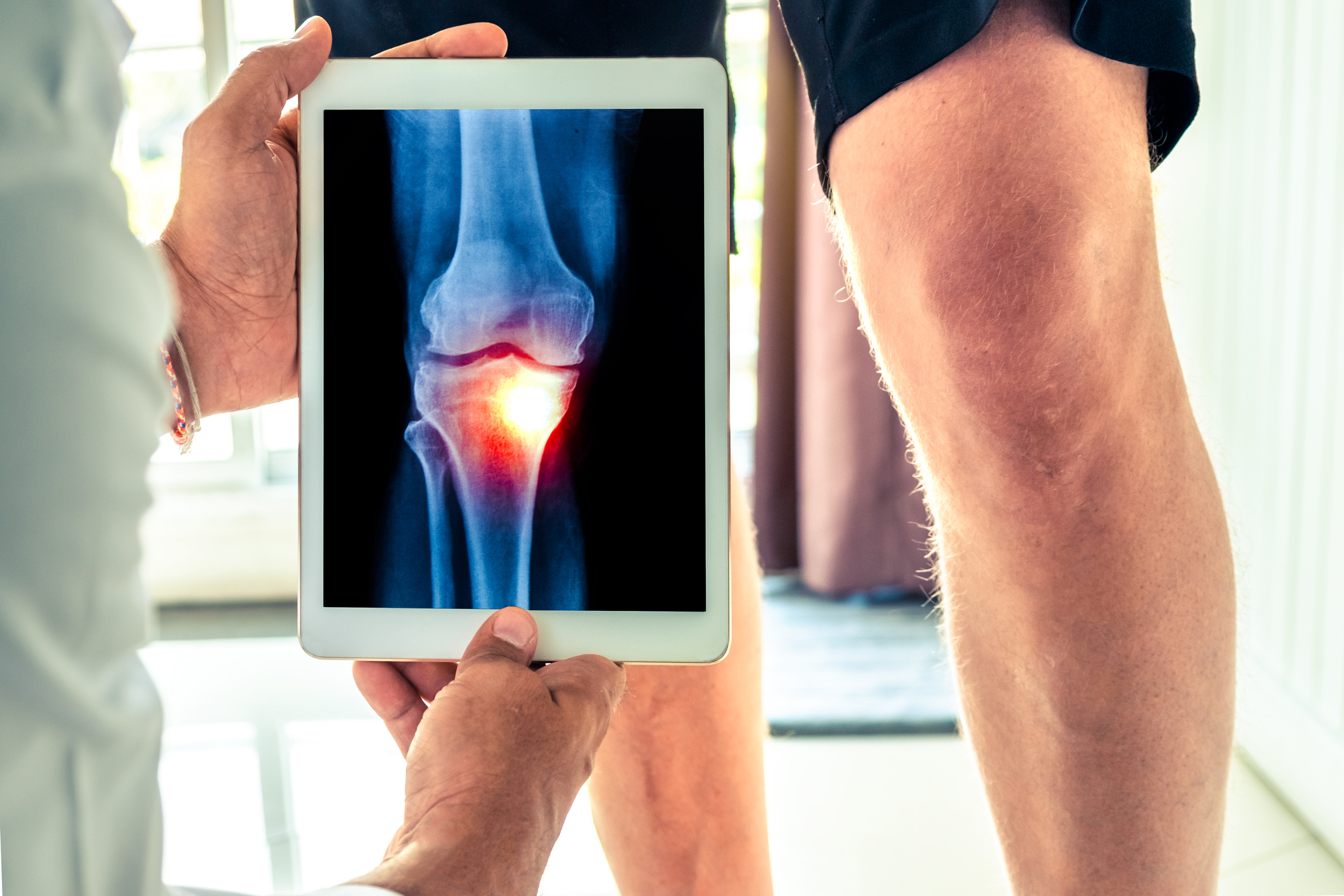Get Easy Health Digest™ in your inbox and don’t miss a thing when you subscribe today. Plus, get the free bonus report, Mother Nature’s Tips, Tricks and Remedies for Cholesterol, Blood Pressure & Blood Sugar as my way of saying welcome to the community!
How effective is garlic for osteoarthritis knee pain?

Obesity can increase your risk of developing chronic health conditions such as heart disease, diabetes, cancer and age-related cognitive disorders.
But it’s also a major risk factor for the onset and progression of osteoarthritis (OA). Most experts identify the added physical strain weight puts on the joints as the reason for worsening osteoarthritis symptoms and the joint damage it causes.
However, the truth may be more complicated. In one study from earlier this year, researchers observed that biochemical signals released by fat cells could make cartilage more susceptible to breaking down.
Whatever the cause, easing the pain of osteoarthritis can be difficult. But as investigators strive to better understand the connection between obesity and osteoarthritis, one team has been exploring the therapeutic impact a certain plant compound has on the joint that often carries the brunt of extra weight and OA pain…
Garlic can help ease knee osteoarthritis
In a secondary analysis, which further explored the results of a 2018 study by researchers in Iran and Australia, researchers have concluded that garlic supplements helped reduce pain and joint stiffness in obese women with osteoarthritis of the knee.
The most recent Iranian study investigated 50 obese women between the ages of 50 and 75 with mild to moderate knee OA. Women who needed surgery, were undergoing other therapies for OA or taking medications for OA, as well as smokers, those with diabetes and other endocrine or chronic diseases, and those receiving anticoagulant agents were excluded from the study.
The participants were randomly assigned to either receive a daily 1,000-mg odor-controlled garlic tablet or placebo for 12 weeks. Participants were told not to change their dietary routine or level of physical activity, and they could not use garlic in their diet for the duration of the study.
The women were given a questionnaire to rate different aspects of pain, stiffness and physical function at the beginning of the study. By the end of the study, the women who took the garlic supplements reported a marked decrease in pain and stiffness and improvement in physical function compared with the placebo group. And these changes occurred despite the women having shown no significant change in weight, BMI or waist circumference during the study.
Getting garlic’s benefits without the hassles
This study isn’t the first to tests garlic’s effects on osteoarthritis.
A 2010 study by researchers at King’s College London and the University of East Anglia found that healthy women who consumed a diet high in allium vegetables, such as garlic, onions and leeks — have lower levels of hip osteoarthritis. They found that a compound called diallyl disulfide limits the amount of cartilage-damaging enzymes and may actually help protect against osteoarthritis.
The Arthritis Foundation states that diallyl disulfide is an anti-inflammatory compound that limits the effects of pro-inflammatory cytokines. Inflammation is a great contributor to pain.
“I think people are often surprised at what a great anti-inflammatory source spices can be,” says board-certified sports dietitian Kim Larson, a national spokesperson for the Academy of Nutrition & Dietetics. “But the more anti-inflammatory foods and spices you eat, the more you are tamping down on chronic inflammation.”
You can get the health benefits of garlic simply by adding an extra clove or two of raw garlic to your daily diet. But consuming raw garlic has its downsides.
Garlic’s distinctively pungent odor and taste can linger long after you’ve eaten it, giving you bad breath and a burning sensation in your mouth. And eating raw garlic can give you heartburn, gas, body odor and lead to digestive distress. Also, it’s not a good idea to eat garlic without talking to your doctor if you are on blood thinners since it can increase your risk of bleeding.
If eating raw garlic doesn’t appeal to you, you can always try supplements. Makers of garlic supplements have done their best to eliminate some of the more objectional aspects of garlic, such as its smell and taste.
But be aware that it can be more difficult for your body to obtain allicin from garlic supplements than from raw garlic. Allicin is a compound in garlic and other allium vegetables believed to have anti-inflammatory properties. Allicin is produced when garlic is crushed or chopped and is much easier for the body to absorb if you consume the garlic right after that. You may want to look for a garlic supplement that’s been processed in a way that makes the allicin more easily available to the body.
Editor’s note: Did you know that when you take your body from acid to alkaline you can boost your energy, lose weight, soothe digestion, avoid illness and achieve wellness? Click here to discover The Alkaline Secret to Ultimate Vitality and revive your life today!
Sources:
Increased efficacy of a garlic supplement on knee osteoarthritis symptoms in patients with obesity — Journal of Herbal Medicine
Health Effects of Garlic — American Family Physician
Garlic: Side Effects — WebMD
The Health Benefits of Allicin — Verywell Health














